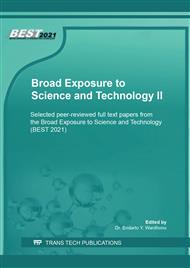p.155
p.161
p.167
p.176
p.189
p.197
p.205
p.211
p.218
Homogenization Process for Aluminum As-Cast from Waste of Beverage Cans
Abstract:
Development an ingot originated from the waste of aluminum product had many the advantages and could reduce the cost of aluminum metal production compared to primary process from ore. In this research used the waste of beverage aluminum cans One of the manufacturing methods conducted recycling aluminum waste is the casting process, Commonly, the problem with this casting process was that they are not homogeneous in the as-cast due to segregation. So that in this study a homogenization process on recycling aluminum castings would be carried out to obtain more homogeneous mechanical properties and microstructure. The variables that influence during the homogenization process was heating temperature and holding time. The heating temperature for this was in range from 450 C to 550 C, and the holding time was 2 to 4 hours. Further the effect of the parameter would observe. The observation included mechanical properties, such as tensile strength and hardness, and Microstructure of the ingot. The operation temperature and holding time influenced to grain size and hardness of Aluminum. In general, increasing homogenization temperature would reduce mechanical properties.
Info:
Periodical:
Pages:
189-194
Citation:
Online since:
March 2022
Authors:
Keywords:
Price:
Сopyright:
© 2022 Trans Tech Publications Ltd. All Rights Reserved
Share:
Citation:


